
Religions derive their power and popularity in part from the ethical compass they offer. So why do so many faiths help perpetuate something that most of us regard as profoundly unethical: the oppression of women? [NYT]
An op-ed piece in the NYT, by the notable Nicholas Kristof, looks at the way many religions perpetuate and sanctify the oppression of women. He discusses that many abuses, such as mass rapes, arise out of a social context in which women are considered second-class citizens and argues that this social context is something religions have helped shape rather than fought hard to change. Kristof wrote this op-ed after listening to former President Jimmy Carter’s speech to the Parliament of the World’s Religions in Australia last month.
Mr. Carter, who sees religion as one of the “basic causes of the violation of women’s rights,” is a member of The Elders, a small council of retired leaders brought together by Nelson Mandela. The Elders are focusing on the role of religion in oppressing women, and they have issued a joint statement calling on religious leaders to “change all discriminatory practices within their own religions and traditions.”
 Sikh history is about to be made in North America. In December, throughout the United States, 500,000 nonprofit charities competed on a competition on the popular internet website, Facebook, for the Chase Bank Community Giving contest. The top 100 groups advanced to the second round for a chance at 1 million dollars.
Sikh history is about to be made in North America. In December, throughout the United States, 500,000 nonprofit charities competed on a competition on the popular internet website, Facebook, for the Chase Bank Community Giving contest. The top 100 groups advanced to the second round for a chance at 1 million dollars.
Out of the top 100 groups, a Sikh youth organization was amongst the top 20. That Sikh youth organization was the Jakara Movement. The Jakara Movement has hundreds of volunteers throughout California and has been organizing Sikh conferences, retreats, camps for the youth for the past 10 years. Now they have a unique opportunity for seva for their community. The Jakara Movement has publicly committed that funds won will go towards the building of a historic Sikh Museum in North America.
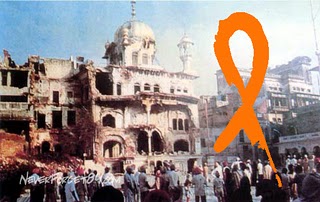 Guestblogged by Joo Kay Singh
Guestblogged by Joo Kay Singh
I’ve just spent the past hour watching 1984: A Sikh Story on BBC1 in the UK, and came away mildly disappointed, but not altogether surprised.
The documentary was framed as a “personal journey” for the presenter, Sonia Deol, to “unravel the events of 1984, an iconic year for Sikhs”, and informs us that “the bloody aftermath that followed [of Indira Gandhi’s assassination] so shocks Sonia that she is forced to reappraise the depth of her commitment to her faith”
For the first part of the program, we were served up with interviews mainly with Mark Tully and K.S. Brar who sounded like they were both regurgitating paragraphs from their respective books on the subject on the background to the Invasion. Sant Jarnail Singh was given the usual ‘congress stooge turned bad’ treatment by both, and the Darbar Sahib invasion covered without a hint of investigative journalism. Sonia failed to enquire why 37 other gurdwaras were attacked on the same day, if as per Tully and Brar’s insistence, Indira Gandhi was merely interested in Sant Bhindrawale. She similarly fails to question either of the men on the timing of the attack, on why the entire state of Panjab was placed under curfew, the expulsion of all foreign media, or the killings of pilgrims by the Army.
For our TLH readers in the UK – this documentary is premiering tonight on BBC One at 10:55pm.
Just over 25 years ago, the storming of The Golden Temple, the most sacred of Sikh shrines, by the Indian Army led to protests around the world. Sonia Deol embarks on a personal journey to unravel the events of 1984, an iconic year for Sikhs. It culminated in thousands of deaths including the assassination of the Prime Minister, Mrs Indira Gandhi. The bloody aftermath that followed so shocks Sonia that she is forced to reappraise the depth of her commitment to her faith. [link]
As with every retelling of this part of history, the question is whether the documentary will be controversial. One article suggests the BBC may be stirring up a “hornet’s nest of controversy,”
[It] is likely to prove controversial with some Sikh groups because of its portrayal of the militant Sikh preacher Sant Jarnail Singh Bhindranwale. It is also likely to draw the ire of the Indian government for its story on how it reacted following the assassination of Indira Gandhi. [link]
Nevertheless, this is an event that has often been ignored in international media – so i’m sure many in the community will welcome the coverage. If any of TLH readers do happen to catch the show tonight, please share your thoughts!
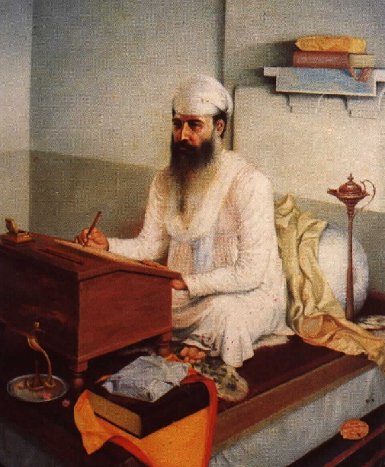 Months ago we announced the first Sikh graduate student conference – SIKHOLARS, being hosted by the Jakara Movement and Sikh Spirit Foundation.
Months ago we announced the first Sikh graduate student conference – SIKHOLARS, being hosted by the Jakara Movement and Sikh Spirit Foundation.
Today, the confirmed participants have been announced:
- Ajeet Singh Matharu, Columbia University, History, N/A
- Arvinder Singh Kang and Amanpreet Singh Brar, University of Mississippi, Computer Science, Extending Gurmukhi Script into Twenty-first Century & Beyond
- Bandana Kaur, Yale University, Environmental Management, Reclaiming Natural Histories: Biodiversity and Landscape in Pre-Green Revolution Punjab
- Erik Resly, Harvard Divinity School, Divinity, (Re)figuring the Sikh: Theodicy, Discipleship and Narrative in Ethical Perspective
- Harjant Gill, American University, Anthroplogy, From Putt Jattan De to Munde UK De: The Transformation of Masculinities in Punjabi Cinema
- Iqbal Kaur Gill, University of British Columbia, Counseling Psychology, First Generation Canadian Punjabi Sikh Parents Beliefs about Adolescent Suicide and Suicide Related Behaviours
- Kamal Arora, York University, Social Anthropology, The Politics of Pain: Gender, Mourning and the Punjab Crisis
- Mandeep Kaur, University of Texas (Austin), Nursing, The Sikh Patient: A Review of the Nursing Literature
- Mette Bach, University of British Columbia, Creative Writing, The Changing Faces of Suburbia
- Preet Kaur Virdi, York University, Socio-Legal Studies, Silence: Resistance or Acquiescence? Sikh women’s perspectives on Canadian law
A thorougly diverse and intriguing display of scholars. We eagerly await for the conference. We hope others can attend February 20, 2010 at Stanford University.
For more information and to read the abstracts, see here.
- Ajeet Singh Matharu, Columbia University, History, N/A
- Arvinder Singh Kang and Amanpreet Singh Brar, University of Mississippi, Computer Science, Extending Gurmukhi Script into Twenty-first Century & Beyond
- Bandana Kaur, Yale University, Environmental Management, Reclaiming Natural Histories: Biodiversity and Landscape in Pre-Green Revolution Punjab
- Erik Resly, Harvard Divinity School, Divinity, (Re)figuring the Sikh: Theodicy, Discipleship and Narrative in Ethical Perspective
- Harjant Gill, American University, Anthroplogy, From Putt Jattan De to Munde UK De: The Transformation of Masculinities in Punjabi Cinema
- Iqbal Kaur Gill, University of British Columbia, Counseling Psychology, First Generation Canadian Punjabi Sikh Parents Beliefs about Adolescent Suicide and Suicide Related Behaviours
- Kamal Arora, York University, Social Anthropology, The Politics of Pain: Gender, Mourning and the Punjab Crisis
- Mandeep Kaur, University of Texas (Austin), Nursing, The Sikh Patient: A Review of the Nursing Literature
- Mette Bach, University of British Columbia, Creative Writing, The Changing Faces of Suburbia
- Preet Kaur Virdi, York University, Socio-Legal Studies, Silence: Resistance or Acquiescence? Sikh women’s perspectives on Canadian law
Where do the elderly fit into India new modern image? Often in South Asian families, caring for the elderly is not a question-it will happen. In West we know of the many stories of how the elderly are mentally, physically, and 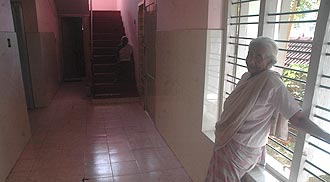 emotionally abused by their children. Often the elderly are forced into starting their life over again in a new country coupled with the strain of supporting themselves at an age when they can no longer work and are socially dependent on their children.
emotionally abused by their children. Often the elderly are forced into starting their life over again in a new country coupled with the strain of supporting themselves at an age when they can no longer work and are socially dependent on their children.
However, in India, we are told it’s not the case. Families care for their elderly-some are even forced to because all the property is in their elderly parents names. But New America Media reports that the number of elderly left to care for themselves in India is skyrocketing and the country has no infastructure to care for them. For example, with an aging population of 80 million, Indian old age homes do not accept patients with dementia. Dementia is a common problem that afflicts the elderly.
Today, January 5th, Sikhs around the globe will come together to celebrate Guru Gobind Singh Ji’s gurpurab. On this day we celebrate our Guru and the gift that was bestowed upon us. Guru Ji’s famous quote tells us that living as a Sikh is as much important as appearing as a Sikh and that with both, hand in hand, we are a Sikh of the Guru.
![]()
The shabad below, Nasro Mansoor, was written in persian by Bhai Nand Lal Singh. It’s beautiful! Gurpurab greetings to all!
A few weeks ago, Maple Leaf Sikh said that “We often lament the state of our gurdwaras but we should just as often stop and think about how much we have accomplished.” How very true! How often do we highlight communities where things are working well for the Sikh diaspora? 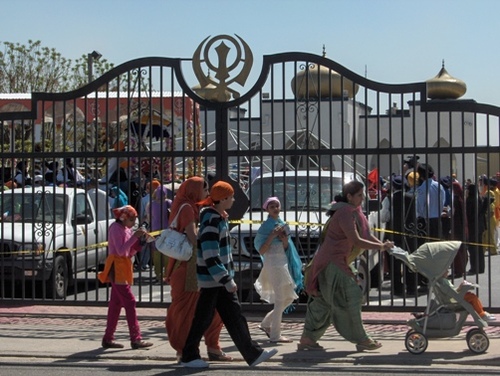 A recent article tells us how a small town in Central California, Livingston, is helping to bridge a gap created by a cultural, linguistic and religious divide between generations. Recognizing that language is the link to religion for Sikhs, the sangat in Livingston has ensured that children in the area have the opportunity to attend Punjabi classes and learn the language.
A recent article tells us how a small town in Central California, Livingston, is helping to bridge a gap created by a cultural, linguistic and religious divide between generations. Recognizing that language is the link to religion for Sikhs, the sangat in Livingston has ensured that children in the area have the opportunity to attend Punjabi classes and learn the language.
There’s a lasting link between the 35-character alphabet used to write Punjabi and the Sikh religion. The Sikh scriptures and the Punjabi language of many Sikhs were written in a script known as Gurmukhi. So to be fully initiated into the religion, you must know how to read it… Tripat Grewal, who helps teach Punjabi language classes, said that for many Sikhs the fact that their children couldn’t understand what was being said in the temple was at the heart of the effort to create Punjabi-language classes. “The religious part was very important,” she said. [link]
When the space at the local Gurdwara became too cramped, the leaders secured classroom space at a local elementary school. While these efforts aren’t the first of its kind, it’s always great to hear a community coming together to address a need. For those of us who are familiar with the small towns scattered across central california — these punjabi classes are vital to bridging the divide between generations. With large immigrant populations and many living in joint families – being able to communicate effectively with one another is and will continue to be an important part of the diaspora.
 Earlier I described the success of Sikh organizations in a competition being held by Chase Bank Community Giving on Facebook.
Earlier I described the success of Sikh organizations in a competition being held by Chase Bank Community Giving on Facebook.
Now the second round manifesto for the 1 million dollar grand prize has been publically announced.
The Jakara Movement is publicly committed to use ALL money for the construction of 2 projects – the first North American Sikh Museum AND the Mata Gujri Women’s Center and Domestic Violence Shelter.
By voting for the Jakara Movement from January 15th-22nd, you will make this a reality.[link]
Wishing all our TLH readers a happy and prosperous New Year! May Waheguru continue to bless you with wisdom and strength in 2010. We appreciate your support. Without your readership TLH would have no real existence. Thank you and always stay in Chardi Kala!
Our resolution this year is to provide thoughtful and engaging posts.
What are your new year resolutions?
This time, Bollywood actually picked an interesting lens through which to depict life in a Punjabi-Sikh household. An 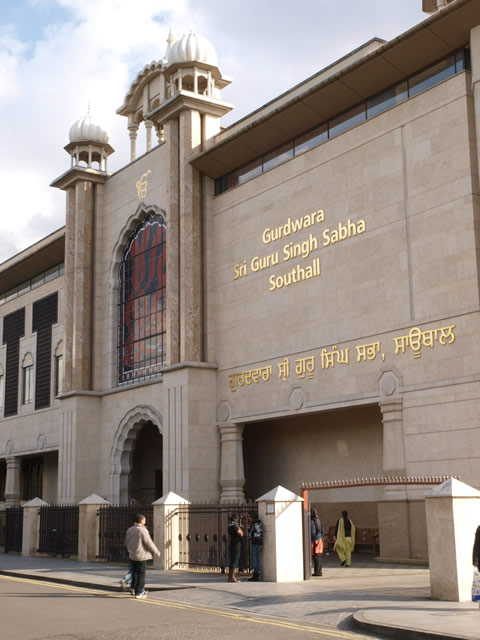 upcoming movie, Patiala House, is a look at cross-generation cultural assimilation in Southall.
upcoming movie, Patiala House, is a look at cross-generation cultural assimilation in Southall.
At heart, says Nikhil, Patiala House is a father-son story. “Like Billy Eliott where the father is a coal miner but the son wants to be a dancer. In my film, Rishi Kapoor feels his dreams as a Sikh immigrant in England are being destroyed by his son. But the son Akshay Kumar has his own dreams to pursue.” [TOI]
How we view our 2 pronged identity of Punjabi-Sikhism, and how each is depicted by outside communities such as Bollywood is often, understandably and rightfully, a controversial issue. But Patiala House seems only superficially concerned, if at all, with the Sikh identity.
The filmmakers met with Sikh elders at the Southhall Gurdwara, where cameras are ordinarily not allowed, to talk about the ideas behind the film. The film partly takes place during Southhall’s 1979 race riots, which many of the elders had lived through.
Update: The SWAT team provided an update on their progress. See end of post.
The Sikh Welfare Awareness Team is a new charitable organization in the UK focused on bringing awareness to drug and alcohol abuse in our community and reducing involvement in crime by providing youth with activities and organized events to participate in. The organization’s primary goal is “to establish relationships amongst the youth and… aim to bring together the local Sikh Community and focus on projects which benefit the youth of today.” I came across information about this organization after viewing a troubling YouTube video about homeless Sikhs (since the video below has been made private by the owner, log on and you can also watch the videos on Facebook). The Sikh Welfare Awareness Team (or S.W.A.T.) is currently working to bring awareness to the growing number of Sikhs, many who are recent immigrants from Punjab and are homeless living on the streets of Southall.
A few months ago, RP Singh wrote a very timely post on compassion and what it means to Sikhs. In Gurbani, the word Daya often translates to compassion, a trait which is long known in our history. One of the Panj Pyara or beloved five was Bhai Daya Singh and thus, Compassion along with Justice, Courage, Discipline and Leadership are important elements of the Khalsa.
As a reminder of this and as we get ready to begin a New Year – I wanted to share with you the Charter for Compassion – “a call to bring the world together.” It is stated that, The principle of compassion lies at the heart of all religious, ethical and spiritual traditions, calling us always to treat all others as we wish to be treated ourselves. Compassion impels us to work tirelessly to alleviate the suffering of our fellow creatures, to dethrone ourselves from the centre of our world and put another there, and to honour the inviolable sanctity of every single human being, treating everybody, without exception, with absolute justice, equity and respect. [link]
I would encourage you to watch the video below and sign the charter. It might be a passive form of activism, however, let it be a nudge to hold ourselves accountable in the coming years – to live compassionately and emulate Sikhi in one of it’s purest forms.
 The events following the June elections in Iran continue to reverberate. The allegations of widespread election fraud led to hundreds of thousands of Iranian youth to take to the streets and asking “Where’s My Vote?”
The events following the June elections in Iran continue to reverberate. The allegations of widespread election fraud led to hundreds of thousands of Iranian youth to take to the streets and asking “Where’s My Vote?”
A regime unable to answer its citizenry and an escalating use of repressive tactics has led many to begin questioning the legitimacy of the government. Born out of a revolution in 1979, a generation has grown up on legitimizing the current regime through understanding of the tyranny of the Shah’s. However, the tactics unleashed in the wake of the elections has shifted the public from asking about votes to calling for the ouster of the Supreme Leader. Khamenei has none other to blame than himself through his partisanship in siding with Ahmadinejad, rather than standing above the fray.
A few weeks back, while skimming through the news, I found an interesting report on Canadian Prime Minister 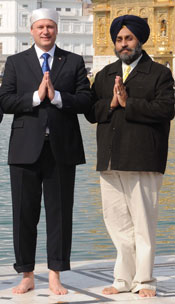 Stephen Harper’s recent visit to the Darbar Sahib in Amritsar. Although I didn’t care much for the hoopla around his visit, I did find it interesting that he “offended” Sikhs by refusing to accept parshad or langar.
Stephen Harper’s recent visit to the Darbar Sahib in Amritsar. Although I didn’t care much for the hoopla around his visit, I did find it interesting that he “offended” Sikhs by refusing to accept parshad or langar.
As I understand it, the preparation of parshad (grace) is unique in that it is ceremonially touched by a kirpan (kirpan bhet), which serves as an indication of the Guru’s acceptance and blessing. It is then distributed to 5 Amritdhari Sikhs representing the Guru Khalsa Panth. A Sikhs’ consumption of parshad displays a submission to the Guru. So accepting parshad is essentially “accepting His grace.” I’ve also been taught that parshad should be distributed after the hukamnama is read, as accepting parshad symbolizes acceptance of the hukamnama.
Now, whether or not Sikhs themselves understand the hukamnama, or even listen to it is another post for another day – but, if accepting parshad is accepting the Guru’s hukam, should a non-believer accept it? Although the Rehat Maryada states that parshad should be offered to everyone equally (as it should), should we be offended if someone rejects it? If a non-Sikh understands the meaning behind our practice and politely refuses it out of respect, shouldn’t we appreciate it instead?
I remember years ago at a Sikh Day Parade in Washington DC, as a handful of us were walking through the sidewalks handing out “Who are the Sikhs” pamphlets and answering questions from onlookers, an elderly BibiJi was darting through the crowd distributing parshad to random strangers. As shocked as I was to see this, it couldn’t compare to the shock on the face of those who received it. Most were not sure what to do with it, or joked about it with their friends, while others were seen throwing it away. I’m sure the BibiJi’s heart was in the right place, but what were we hoping to accomplish by this?
My question is…how can we value our traditions if we don’t even understand them?
And if we don’t value our traditions, how can we expect others to?
Continue Reading »
In predominantly Christian countries like the U.S., Christmas has become a cultural holiday that even non-Christians celebrate to some extent. Most of us enjoy, at least, taking advantage of days off, eating lots of cakes and pies, and spending time with family and friends.
The Times of India thinks Christmas can do even more than give us a day off work… like heal the wounds caused by police brutality in Ludhiana against Sikh protesters of Ashutosh and the Divya Jyoti Jagriti Sansthan. Of course, TOI also mischaracterizes the conflict at issue as one between migrants who now feel left out of Ludhiana’s social fabric and Sikhs.
Christian organizations are planning to celebrate the festival by reaching out to the migrants, who have been feeling left out after the riots they were involved in and to Sikh protesters, who got hurt in police action.
“Christmas celebrations have the twin themes of peace and prosperity. We will be going to the areas like Dhandari, which have many migrants staying there and witnessed a lot of clashes during the riots,” said Albert Dua, president of Christian United Federation. [TOI]
TOI journalists may not have much of a grip on reality, and are probably overestimating what one holiday and a few days off can do. Still, I do hope you enjoy the holidays, however you spend them. Happy holidays!
On a remotely related note, if Santa were Punjabi….

“There is this very distinctive and self-incriminating silence within communities that have a history of ‘honour’ killings,” he says. “The so-called community leaders, the influential religious groups and the local language newspapers remain deafeningly silent when these killings happen. But that silence makes them just as guilty as the people who kill in the name of honour.” [link]
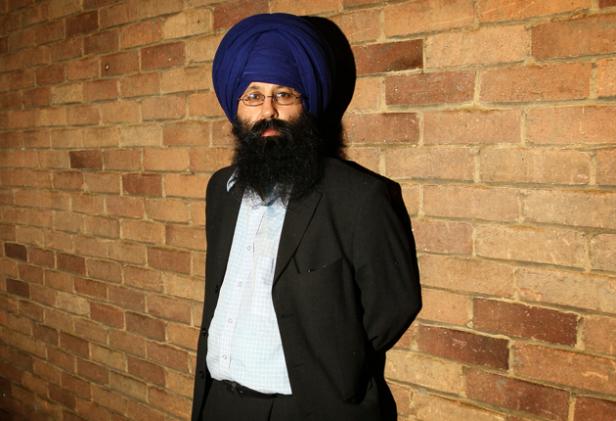 Statements like the one above, has made Jagdeesh Singh (pictured) a controversial figure within the suburbs of west London -home to many of Britain’s 400,000-plus Sikhs. While many young Sikhs consider Jagdeesh a role-model for the way he stands up and speaks against parochial traditions, many older and more conservative members of the community believe he is a troublemaker “who needlessly provokes controversy by shining an unwelcome spotlight on things that should not be aired in public”.
Statements like the one above, has made Jagdeesh Singh (pictured) a controversial figure within the suburbs of west London -home to many of Britain’s 400,000-plus Sikhs. While many young Sikhs consider Jagdeesh a role-model for the way he stands up and speaks against parochial traditions, many older and more conservative members of the community believe he is a troublemaker “who needlessly provokes controversy by shining an unwelcome spotlight on things that should not be aired in public”.
Eleven years ago, on 15 December 1998, Surjit Athwal disappeared during a holiday in the Indian Punjab with her in-laws. The 27-year-old customs officer at Heathrow had been desperately unhappy in her 10-year marriage to her husband Sukdave and had found love in the arms of another man. After years of abuse, she finally plucked up enough courage to seek a divorce but was persuaded by her domineering mother-in-law Bachan to travel to the Punjab for a family wedding in what she thought would be a final act of reconciliation. Instead, she was lured to her death. It took Jagdeesh Singh years to persuade the police to investigate his sister’s disappearance properly, and many more years of painstaking detective work to encourage one of the Athwal family members to testify. Finally, nine years after Surjit disappeared, Sukdave and Bachan Athwal were found guilty of ordering her death at a family council meeting. [link]
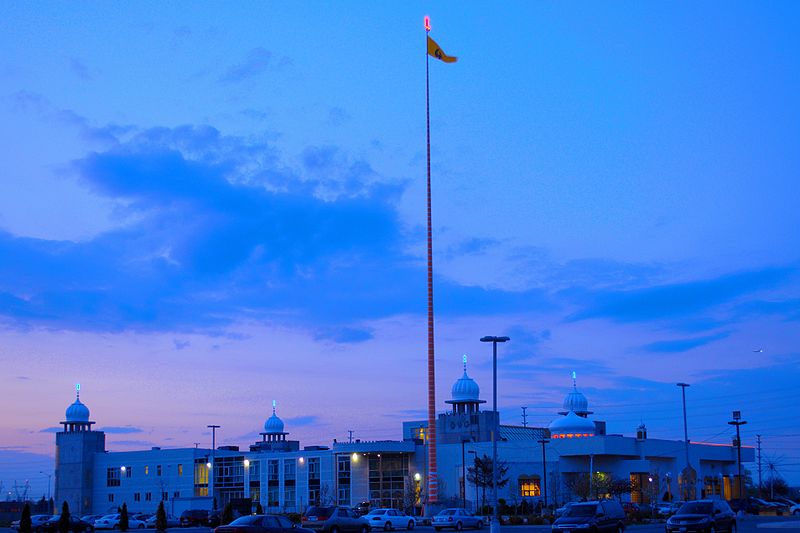 We often lament the state of our gurdwaras but we should just as often stop and think about how much we have accomplished.
We often lament the state of our gurdwaras but we should just as often stop and think about how much we have accomplished.
Tonight I had a chance to visit the famous Ontario Khalsa Darbar (aka Dixie) Gurdwara in Mississauga/Brampton, Ontario. On a frigid Friday night in December, the place was packed with sangat and programs.
In one hall, a Hindu Panjabi family was having a bhog for a deceased elder. On the other side agurmat sangeet teacher was having a kirtan for her daughter with beautiful kirtan being sung in raag by her many young students. In the adjoining halls, the United Sikhs organization was having their 2nd Annual Global Sikh Civil Rights Conference with tonight’s opening session focusing exclusively women’s issues. Upstairs, Harmeet Singh was holding his usual Friday session with hundreds of youth and their families. And to top this off Bhai (no longer Sant) Niranjan Singh Jawadi Kalan was performing kirtan to a packed hall in the main hall. Almost every program was in English or being translated into English on the screens.
So while we can (and should) continue to critically analyze the hardware (physical structures) and software (programs/initiatives) of our Sikh institutions, we need to simultaneously recognize when progress is being made.
Growing up I would have killed to have been a part of each of those individual programs happening at Dixie Gurdwara tonight (well maybe not the bhog) and today all of those functions were happening on the same day under the same roof.
On many days, it seems like we’re moving two steps back, but tonight I saw at least one step forward.
12/19/09
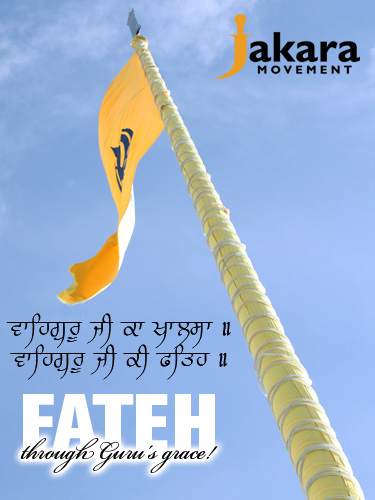 Thank you to all TLH readers that voted and participated in the Chase Bank Community Giving competition. Over 500,000 organizations competed and 2 organizations from our community find themselves with $25,000 to further the community and a chance for advancement in the next round – the Jakara Movement and Sikhcess.
Thank you to all TLH readers that voted and participated in the Chase Bank Community Giving competition. Over 500,000 organizations competed and 2 organizations from our community find themselves with $25,000 to further the community and a chance for advancement in the next round – the Jakara Movement and Sikhcess.
So here’s the deal. What would be your 1 million dollar dream for the community? Send some suggestions here. A plan is on the way, but we need community feedback first.
Healthcare reform, immigration reform, banking reform, and the list goes on. This past week a diverse coalition lead by Rep. Luis Gutierrez (D-Ill) are laying down the marker in 2009 for comprehensive immigration reform by introducing the Comprehensive Immigration Reform for America’s Security and Prosperity (CIR-ASAP) Act of 2009. This bill has not been passed yet; it has only been introduced.
In a country built on the hard work of immigrants, it is imperative that this group be protected in the United States. Recently, there was a report that 1/3 of Los Angeles’s economy is dependent on immigrants. Also, immigrants are known for their entrepreneurship in small businesses. Tuyet Le, Executive Director of the Asian American Institute, says: “Family-based immigration has long created the foundation for strong, entrepreneurial communities across the country. This bill will reunite immigrants with their loved ones and will also provide some increases in high-skill temporary worker visas.”
This legislation focuses on undocumented students, family reunification, and worker visas-issues affecting our Punjabi Sikh community in America. For example, CIR-ASAP would allow undocumented high school graduates who came to the United States before the age of 16 to attain legal residency. This residency would open up educational and financial aid opportunities. This portion of the bill is modeled after the DREAM Act of 2009, except that it shortens the six-year wait period to three years and removes fines.



